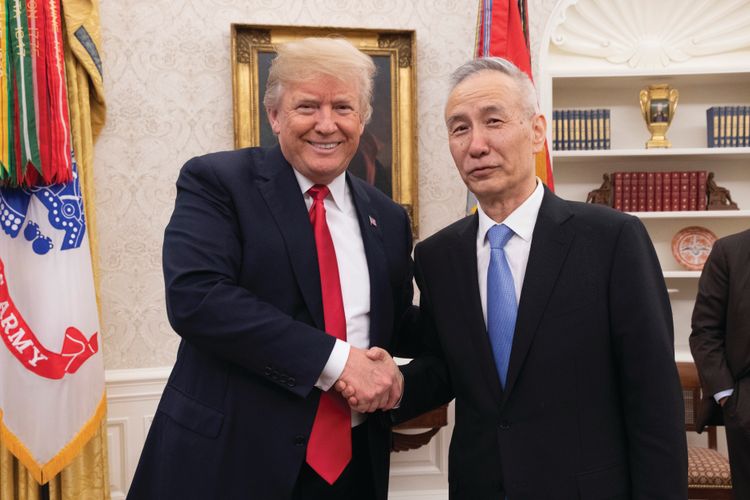ART WORLD NEWS
The Trump administration’s tariffs will not hurt China but they will hurt the US art trade
[ad_1]
President Trump talks trade with the vice premier of the People’s Republic of China, Liu He, in 2018. In a recent escalation of the US-China trade war, art and antiquities could once again be subject to tariffs, this time at a rate of 25%.
© PAS China
In a possible reversal of a decision made last September to remove cultural goods of Chinese origin from a list of proposed items subject to tariffs, the Trump administration has once again suggested paintings and drawings, decorative plaques, engravings, sculpture, antiques and collectibles including stamps and coins should be subject to a 25% tariff—up from the previously proposed 10%. It marks yet another escalation in the ongoing US-China trade war.
This week, American retailers, manufacturers and other businesses have descended on Washington, DC where a US government interagency panel that advises the United States Trade Representative (USTR) is considering the merits of this new proposal that would place tariffs on $300bn worth of products. Among them are several art organisations, including art and antiquities dealers and the Association of Art Museum Directors, all lobbying to see cultural goods once again removed—and with good reason.
Imposing tariffs on Chinese art would represent a major departure from longstanding US government policy to encourage the free exchange of cultural goods by making their import duty free. The tariffs would apply to all cultural goods with a country of origin (manufacture) of China, not just items directly imported from China or Hong Kong. So, for example, an antique Chinese bronze from an old English collection imported into the US from London would be subject to the same 25% duty as if it were imported directly from Beijing.
The same arguments that won art a reprieve from 10% tariffs apply here as well. Tariffs would not hurt the Chinese government. In fact, China would welcome high US tariffs on art as strong support for its growing internal market, redirecting business to Chinese auction houses with ties to prominent members of the Chinese Communist Party. The US government already embargoes ancient Chinese cultural goods pursuant a 2009 agreement with China. This agreement, which was just renewed this year, authorises US Customs to detain, seize and repatriate “undocumented” Chinese archaeological artefacts. High tariffs would help facilitate repatriation by purchase of additional Chinese art to China.
The domestic art and antiquities trade will suffer financially. Consignments to American auction houses and dealers will plunge. No sophisticated collector abroad will consign cultural goods to a US dealer or auction house for future sale when a 25% duty will be collected up front. Moreover, foreign dealers trading in Chinese art will withdraw from US art fairs rather than absorb additional costs associated with tariffs. Indeed, with a 25% premium added to purchases of Chinese art, collectors may consider other areas, which will have ripple effects for museums which acquire art through gifts.
Given these serious concerns, collector and trade groups have engaged to provide comments opposing tariffs on art before the USTR. We should know shortly if the same common sense arguments will prevail this time around as well. Unfortunately, tariffs are but one of an increasing number of problematic issues facing collectors and the trade, including import restrictions, export controls, new assessments for out-of-state taxes on online sales, and compliance costs for anti-money laundering regulations. For collecting to continue to thrive, both dealers and collectors must become more far more engaged than in the past with government decision-makers to protect their passion from overregulation.
Peter K. Tompa is of counsel at the Washington, DC-based law firm Bailey & Ehrenberg PLLC and is the executive director of the Global Heritage Alliance
[ad_2]
Source link













